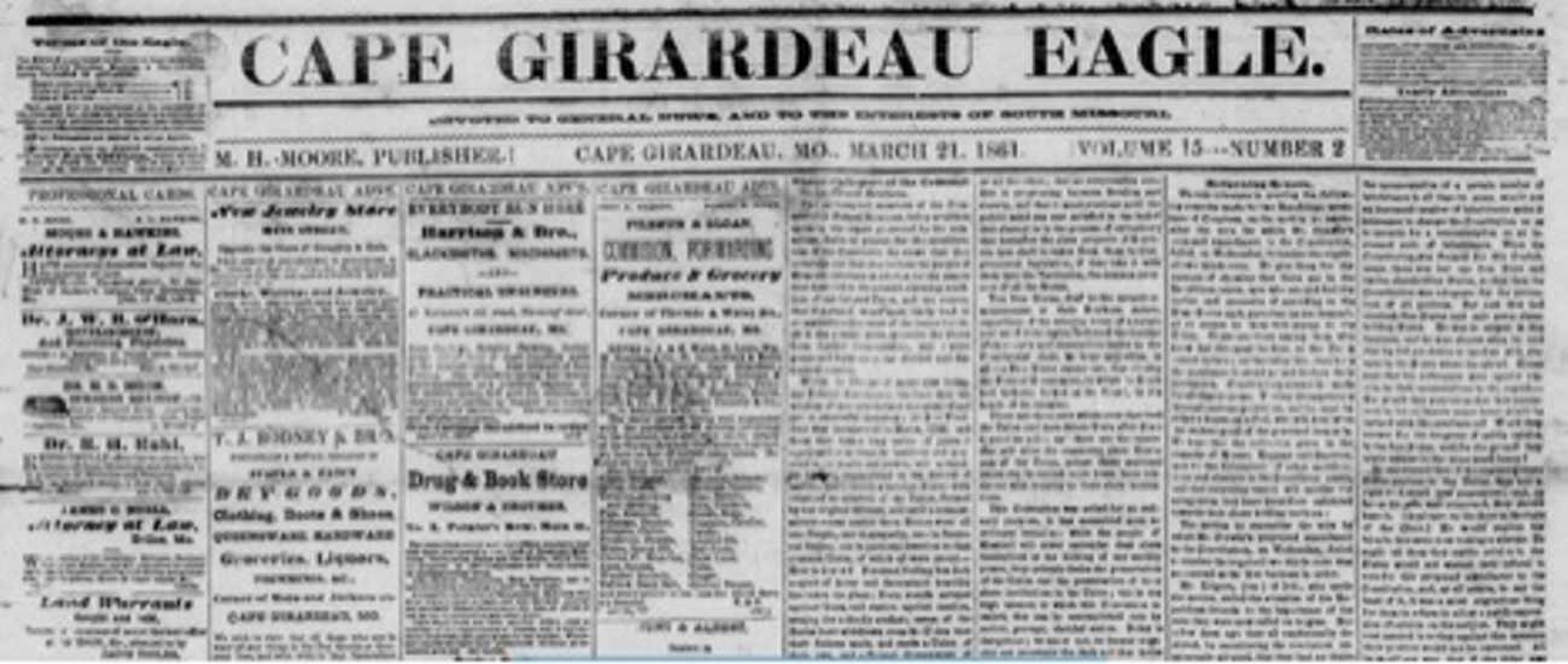Finding your ancestors in the news
The first printed newspapers date to a weekly periodical published in Germany in 1609. Newspapers only began to flourish in the English-speaking world when England relaxed censorship in 1695. The first American newspaper, "Publick Occurrences Both Forreign and Domestick" [sic], published one issue in Boston in 1690 before the authorities suppressed it. ...
The first printed newspapers date to a weekly periodical published in Germany in 1609. Newspapers only began to flourish in the English-speaking world when England relaxed censorship in 1695. The first American newspaper, "Publick Occurrences Both Forreign and Domestick" [sic], published one issue in Boston in 1690 before the authorities suppressed it. Another early effort, the weekly "Boston News-Letter" launched in 1704, but no daily paper appeared until the "Pennsylvania Evening Post" began in 1783. Mass production of newspapers became feasible with the development of high-speed presses in the 1830s.
Depending on the period and locale, newspapers printed vital records such as births, deaths, marriages or even divorces. Few obituaries appear in local newspapers prior to the early 20th century, and these can complement information from other sources. Courts required public posting of legal notices, which often mean the closest newspaper. These include name changes, probate notices, court cases and bankruptcies. In earlier times, the level of privacy was different than it is today, so you might find street addresses, employment/occupation or other personal information.
During the heyday of local newspapers from about 1890-1980, daily and special events appeared. Examples include weddings, club meetings, parties, special anniversaries, openings of businesses and other personal milestones. Notices of ship arrivals might give information about your ancestor's immigration or emigration.
A useful feature of contemporary digitized newspapers on many platforms is the ability to search for words/names. OCR, or optical character recognition (sometimes called optical character reader), facilitates this feature. At present, this feature only works with typed or printed text, but work is proceeding to use it to read handwritten text. OCR is the electronic conversion of images of text to machine-encoded text. This in turn allows searching for strings of text, such as names.
OCR does have limitations. Its accuracy depends on the condition of the original document and on image quality. Additionally, if words break across lines or are hyphenated, OCR may fail to recognize them. It is also of limited use for surnames that are also commonly used nouns (examples: Park, March). Searching for these names results in hundreds of "hits" that are not useful. Finally, some fonts are tough to read with OCR.
Not every newspaper survived, and others may exist in no archival collection. Some survive as bound copies in archives or a local library, and others on microfilm. Digitization is proceeding for many. Genealogists created books of transcriptions, abstracts or indices for some local newspapers. Some of these are available on websites. One great site for looking for online newspapers is "The Ancestor Hunt" Newspaper Research Links: theancestorhunt.com/newspaper-research-links.html.
Among the free websites for digital newspapers is "Chronicling America," maintained the by Library of Congress (chroniclingamerica.loc.gov/). The search feature allows selection of state, date range and text string. A great link from this site is the U.S. Newspaper Directory, 1690-Present, which includes the bulk of newspapers ever published, many of which are offline.
Some states have digital newspaper collections that you can locate by searching "digital newspapers" and "." Two examples are Georgia (gahistoricnewspapers.galileo.usg.edu/) and New York (nyshistoricnewspapers.org/). Wikipedia maintains a world-wide list of online newspaper archives: en.wikipedia.org/wiki/Wikipedia:List_of_online_newspaper_archives.
Digitized Missouri newspapers are accessible for free via newspapers.com. You can search these by going to: shsmo.org/collections/newspapers/mdnp, clicking on "Search Digital Newspapers," and using the search boxes for text string, dates and locations. To clip newspaper articles, you must create a free account. Please note that you cannot bookmark this link, and the service is free only if the SHSMO logo is visible at the top of your screen. Additional Missouri papers are accessible via the Missouri Digital Heritage atsos.mo.gov/mdh/browse?id=12_6.
One of the earliest free newspaper sites is Google News Archive: news.google.com/newspapers. Scroll through the list of newspapers, find the one you want to search and click on the title. In the box next to the "Search Archive" button, type the name you wish to find, or full name in " ", and click "Search Archive." You should get hits in the paper, but also unrelated hits. You can also search through the issues of the target newspaper for the date(s) bracketing an event (such as a death or wedding). Once you have the article, use the "PrtScn" key to copy what is on the screen to the clipboard and paste the image into a document. For Mac users, simultaneously press "Shift," "Command" and "3" to copy the screen. Because of copyright issues and publisher complaints, Google stopped adding content and support in 2011, but recently re-activated the search feature.
Connect with the Southeast Missourian Newsroom:
For corrections to this story or other insights for the editor, click here. To submit a letter to the editor, click here. To learn about the Southeast Missourian’s AI Policy, click here.











